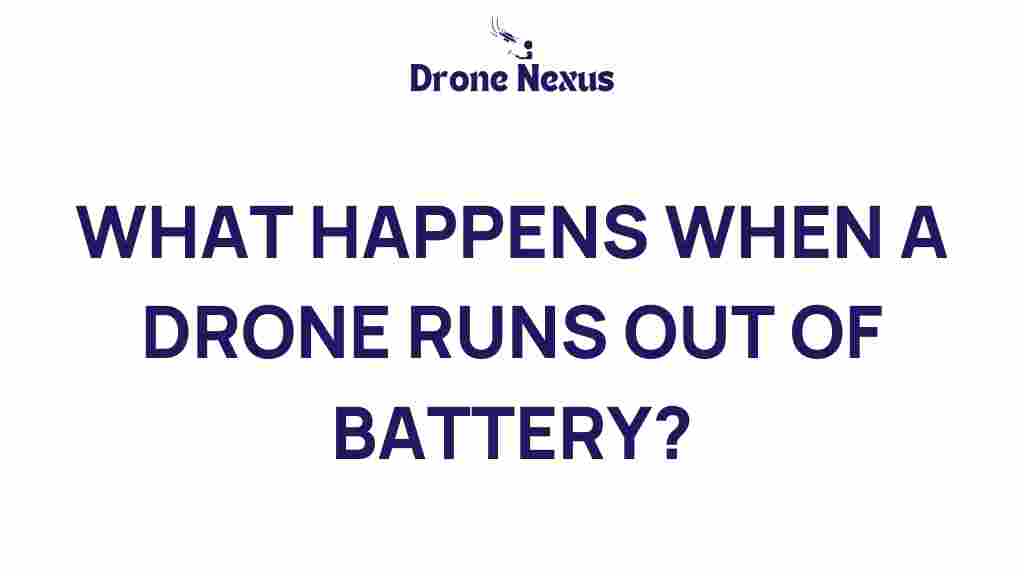The Surprising Consequences When a Drone Runs Out of Battery: Understanding Your Drone Battery
In a world where drones have become indispensable tools for photographers, delivery services, and recreational users alike, understanding the implications of a drone running out of battery is crucial. While most drone operators are aware of the importance of monitoring battery levels, the consequences of a depleted drone battery can be surprising and sometimes catastrophic. In this article, we will explore the potential outcomes of a drone losing power mid-flight, delve into how to manage your drone battery effectively, and provide troubleshooting tips for when things go awry.
The Importance of a Reliable Drone Battery
A drone battery is the lifeblood of any drone operation. The performance, flight time, and safety of your drone heavily depend on the type and condition of the battery you use. Here are some key points to consider:
- Flight Duration: Most consumer drones have a flight time ranging from 20 to 30 minutes, depending on the battery capacity and load.
- Recharge Cycles: Drone batteries, specifically lithium-polymer (LiPo) batteries, have a limited number of charge cycles. Regular monitoring and care can extend their lifespan.
- Weight Consideration: The weight of the battery impacts the overall performance of the drone. A heavier battery may reduce flight time.
What Happens When a Drone Battery Runs Out of Power?
When a drone battery runs out of power, several things can happen. Understanding these outcomes can help you prepare and avoid potential mishaps:
- Immediate Descent: Most drones are equipped with a feature called ‘low battery return-to-home’ (RTH). However, if the battery level drops too low, the drone may simply descend rapidly.
- Loss of Control: As the battery depletes, the drone may become less responsive, leading to loss of control.
- Crash Landing: In some instances, a complete power loss can result in a crash, potentially damaging the drone and surrounding property.
- Data Loss: If your drone is collecting data or streaming video, a sudden power loss can lead to the loss of critical information.
How to Manage Your Drone Battery Effectively
Managing your drone battery effectively is essential to ensure safe flights and prolong the battery’s lifespan. Here are some best practices:
- Regular Charging: Always keep your drone battery charged, especially before long flights.
- Battery Health Monitoring: Keep an eye on the battery’s health. Many drones come with built-in diagnostics to help you track the condition of your battery.
- Avoid Over-Discharging: Never let your drone battery drop below 20%. Regularly check battery levels during flight.
- Use Quality Chargers: Always use the manufacturer’s recommended charger to avoid damaging the battery.
Step-by-Step Process for Maintaining Your Drone Battery
To help you maintain your drone battery and ensure safe operation, follow these steps:
- Inspect Before Use: Before every flight, inspect the battery for signs of damage or swelling.
- Check Voltage Levels: Use a voltage checker to monitor the battery’s voltage before takeoff.
- Charge Appropriately: Charge the battery according to the manufacturer’s guidelines. Avoid overcharging.
- Store Properly: Store your drone battery in a cool, dry place at a charge level of around 50% if not in use for an extended period.
- Regularly Test Flight Time: Conduct test flights to ensure your battery is performing adequately.
Troubleshooting Tips for Drone Battery Issues
Even with the best care, you may encounter battery issues. Here’s how to troubleshoot:
- Drone Won’t Start: If your drone won’t power on, check the battery connection and ensure it’s properly inserted.
- Short Flight Times: If your drone is not flying for its expected duration, consider replacing the battery, as it may be nearing the end of its life.
- Battery Swelling: If you notice any swelling, stop using the battery immediately and dispose of it according to local regulations.
- Inconsistent Performance: If your drone experiences erratic flight patterns, check the battery health and consider recalibrating the drone.
For more detailed troubleshooting, you can refer to the manufacturer’s manual or visit drone battery maintenance resources.
Conclusion: Staying Ahead of Drone Battery Issues
Understanding the surprising consequences of a drone running out of battery is essential for any drone operator. By managing your drone battery effectively, you can avoid unexpected crashes, protect your investment, and ensure a smooth flying experience. Regular maintenance, proper charging practices, and vigilant monitoring can significantly enhance your drone’s performance and longevity. Remember, a well-cared-for drone battery is key to enjoying all the adventures and opportunities that drone flying offers.
As drone technology continues to evolve, staying informed about best practices and potential issues will help you navigate the skies safely. For further insight on drone technology and battery management, check out this comprehensive guide.
This article is in the category Safety and created by DroneNexus Team

1 thought on “The Surprising Consequences When a Drone Runs Out of Battery”